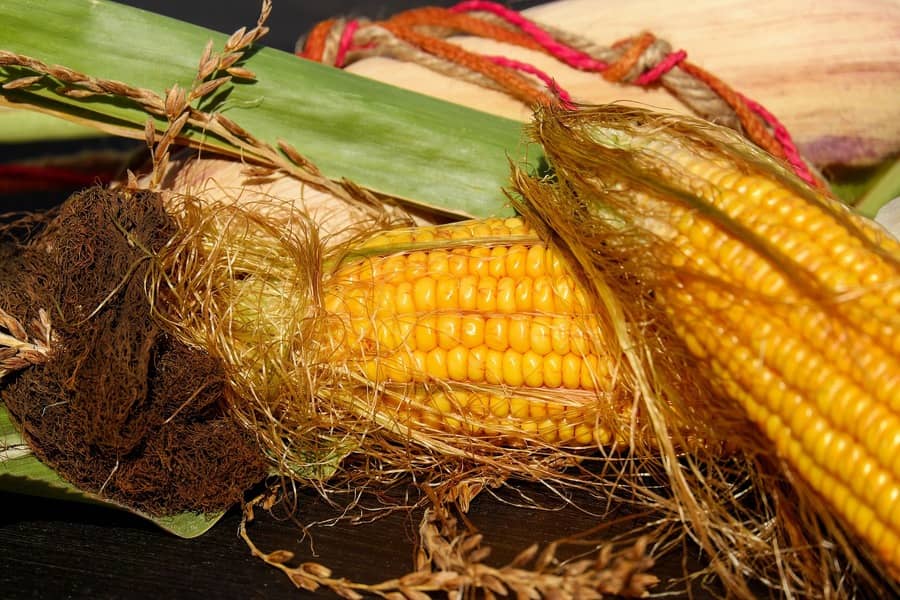Porto Alegre, June 13, 2023 – The climate situation in the Midwest of the United States has generated a natural movement of tension with the rainfall this spring. Twenty days of little rain in an important production region creates this natural and seasonal speculative environment. As the picture is far from converting into a crop failure that changes the price profile, USDA continued in its characteristic of reflecting chaotic situations with only more confirmations and harmful effects to crops. Cutting crop conditions does not necessarily point to production cuts. In this report, USDA did not follow the most speculative expectations of market agents and increased the stocks of both old and new crops, reflecting a bearish report for corn.
The international corn market is currently supported by two anchors:
– The most discreet rainfall cycle in the eastern Corn Belt – USA;
– The wheat scenario suggests some bias toward rising prices with impacts on corn.
The weather picture in the eastern side of the US Midwest continued to be problematic last week. The forecast was for little rain across the region, and this profile was confirmed. The states of Minnesota, Illinois, Indiana, and Ohio have been the most affected by this regional spring drought. The weekly report on crop conditions lowered the situation from good to excellent from 69% to 64%, giving rise to a more consistent speculative movement due to the risk of loss of potential productivity.
Loss of crop conditions does not necessarily reveal loss of productivity potential, at least that is what the ratio of this report with the final production number showed. However, of course, the market will follow the guidance of crop conditions, which may lose some more percentage this week, given last week’s weather. Planting is coming to an end within a good window and should now continue focusing on the planted area report on June 30.
The market, naturally, tries to price the risk, as is normal in this period of the US crop. And this picture will persist until the harvest advances next September. USDA did not follow market tensions as usual. The market or part of it, mainly that part that follows satellite models, tried to already price a cut in potential production by reducing the productivity estimate. USDA data do not have this profile of working in line with climate movements that are not realistic for effective production losses. Of course, the situation deserves attention and will require revisions if it remains more problematic. As there is a good forecast for rainfall ahead, not even the cut in crop conditions was enough to influence USDA to cut production projections.
Thus, the USDA monthly report for June brought no surprises. Old-crop stocks, of 22/23, were high due to poor weekly US exports. The international market seems to have turned toward the Brazilian crop, and the intensity of purchases of US corn has decreased. With no changes to new crop production and demand data, 23/24, USDA ended up raising 2024 stocks to 57 mln tons, being extremely bearish ahead.
This environment indicates that if USDA needs to cut potential productivity later on, the effect on new crop stocks will be discreet and remain satisfactory to maintain prices in a curve below USD 5.00/bushel from September. The next important report will be the planted area report on June 30, in which it will be possible to experience some area retraction in relation to the currently estimated 92 mln acres due to the situation in the Great Lakes region. The fact is that for prices to remain at a sustainable high, the rainfall regime will have to remain discreet in the coming few weeks.
One piece of data that was out of expectations was the update of the figures for Ukraine. Consultants in the Black Sea region estimate the Ukrainian crop at 21 mln tons, and the USDA revised its figure to 24.5 mln tons. In view of the state of the war situation and the forecasts of local agents, it seems the USDA projection is too high. Besides, imports from Europe were enlarged, even maintaining the projection for production. Recovering regional demand after the decline in the incidence of avian flu would be the key point for correcting the trajectory of the data. Europe importing more and Ukraine improving export numbers. The two numbers neutralized each other.
There was no change in the data on China. The forecast for imports of 23 mln tons by the country next season seems too optimistic, especially due to the very slowness of the Chinese economy. On the other hand, the adjustment in the Brazilian corn crop, to over 130 mln tons, is closer to the reality of supply from this source, despite the national numbers being above this level. Argentina’s figure at 35 mln tons was in line with regional estimates.
From the perspective of the CBOT, the USDA report was extremely bearish. It did not confirm the market’s anxiety regarding the loss of production in the United States, it increased stocks and showed an even more comfortable world picture with the increase in the Brazilian corn crop. The price support to the CBOT persists due to the still limited rainfall in the east of the Midwest and the expectation that the report on crop conditions will bring another cut this week, which could bring in July a cut in productivity potential. Rain forecasts are much better for the second half of June, and crops are in a phase where any moisture causes rapid improvements. Therefore, the bias toward prices remains bearish despite the current US climate situation.
Follow the Safras Agency on our website. Also follow us on our Instagram and Twitter and stay on top of the main agribusiness news!

